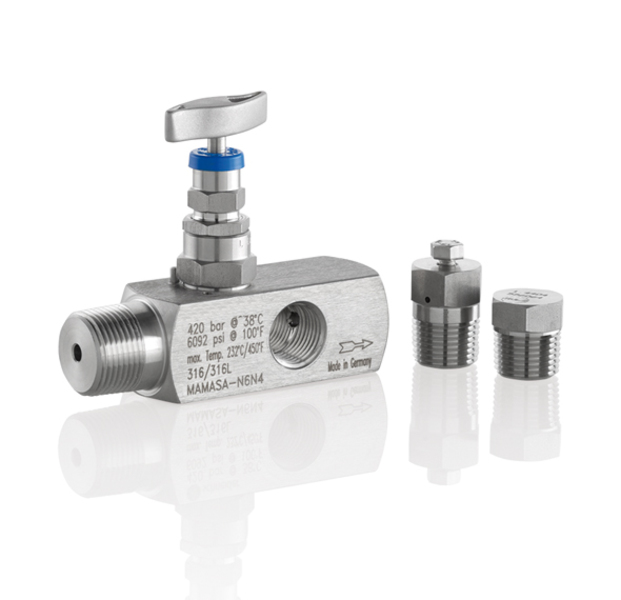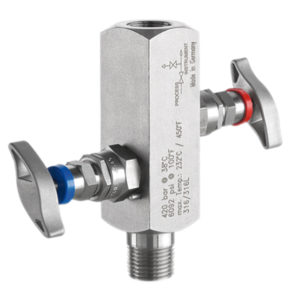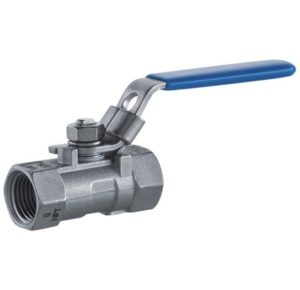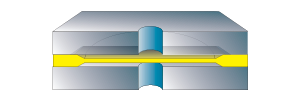

V02-MV Multiport Valve
V02-MV Multiport Valve
Process Markets:
- Oil & Gas
- Chemical
- Power Plants
Data Sheets
Installation + Maintenance
Drawings + Models
Key Features
Isolates process from instrument assembly
Support mounting brackets available
Color-coded dust caps prevent dust ingress and identify handle functions
Selection of wetted materials
PTFE packing (other materials available upon request)
NACE compliant (optional)
Stem with cold rolled surface, back seat and non-rotating needle tip
Material certificates to EN 10204:2004 3.1
Markets & Applications
Hydrogen and Technical Gases
Pumps and Compressors
Chemical and Petrochemical
Energy
Oil and Gas
Machine Automation
- Specifications
- Downloads
Pressure Rating
420 bar/6,092 psi at 60°C (140°F)
Process Connection Size
½ NPT
¼ NPT
Wetted Parts Material
Inconel
Stainless steel 316L (1.4404)
Monel
Hastelloy C
Duplex
Process Connection Style
Threaded
Maximum Temperature Rating
PTFE: 232°C, Graphite: 550°C, Oxygen service: 200°C
Minimum Temperature Rating
PTFE: -40°C, Graphite: -40°C
Data Sheets
Installation + Maintenance
Drawings + Models
- Category: Valves















